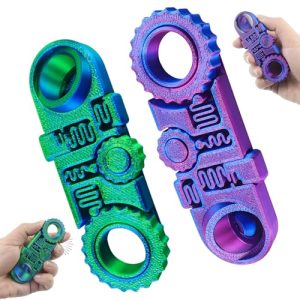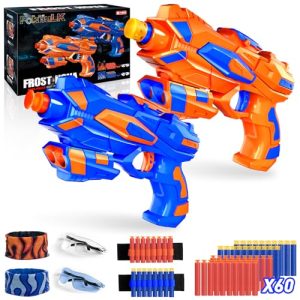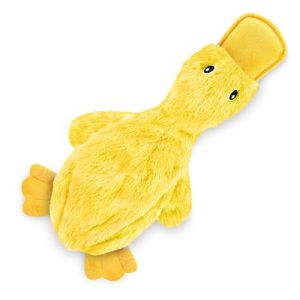Are you looking to impress your classmates and teachers with a fun and creative school project? Imagine the thrill of making your very own toy car!
This hands-on activity is not only exciting but also educational, as it helps you understand basic principles of design and engineering. Whether you want to explore the world of physics or simply enjoy crafting something unique, building a toy car is the perfect project for you.
You’ll discover simple steps to create a toy car using everyday materials. You’ll also learn how to customize your car to make it truly one-of-a-kind. By the end, you’ll feel a sense of achievement and pride as you watch your creation zoom across the classroom. So, are you ready to dive into this adventure and make a toy car that will capture everyone’s attention? Let’s get started!
Materials Needed
Gather cardboard, plastic wheels, glue, and paint for your toy car project. Include scissors, markers, and a ruler for precise crafting.
Creating a toy car for a school project is exciting. It is a fun way to learn about simple mechanics and creativity. Before starting, gather all necessary materials. Ensuring you have everything ready will make the process smooth and enjoyable. Let’s dive into the list of materials you’ll need.
Basic Materials
- Cardboard or plastic bottle
- Four plastic bottle caps
- Two wooden skewers or straws
- Strong glue or adhesive tape
Decorative Materials
- Paints or markers
- Stickers or colored paper
- Scissors
Optional Materials
- Rubber bands for wheels
- Small motor or battery (for advanced projects)
Tools Needed
- Craft knife or cutter
- Ruler for measurements
- Paintbrush
Each item plays a role in building your toy car. Cardboard forms the car’s body, while bottle caps make wheels. Skewers act as axles, allowing wheels to turn smoothly. Paints and stickers add personality to your car. If you want a more advanced project, consider using a small motor. This can make your car move on its own. Always handle tools carefully to avoid accidents. Having all these materials handy will ensure a successful and enjoyable project.
Designing The Toy Car
Crafting a toy car for a school project involves creativity and simple materials. Gather cardboard, wheels, and glue for a fun DIY activity. Follow step-by-step instructions to assemble the car, ensuring each piece fits securely.
Designing the toy car is a creative and exciting part of your school project. This stage lets your imagination run wild. You can decide how your car will look and function. It’s important to plan carefully to ensure success. Below, we’ll guide you through two key parts: choosing the car type and sketching your design.
Choosing The Car Type
First, decide the type of car you want to create. Options include race cars, vintage models, or simple sedans. Consider what materials are available to you. Will you use cardboard, plastic, or wood? Think about the car’s function. Should it roll smoothly or be a static model? Choose a type that matches your skills and resources. This choice sets the foundation for your project.
Sketching Your Design
Now, put your ideas on paper. Start by drawing the car’s basic shape. Keep it simple at first. Add details like windows, doors, and wheels. Use a ruler for straight lines and accuracy. Consider the car’s dimensions. Will it fit on your desk or in your backpack? Sketch multiple angles to get a complete view. This helps visualize the final product. Your sketch acts as a blueprint during construction.
Building The Car Body
Crafting a toy car body involves using materials like cardboard or plastic. Cut and shape these materials into a simple car form. Attach wheels to complete the basic structure.
Building the car body is an exciting part of crafting your toy car. This step allows you to unleash creativity while ensuring the car is functional. A well-designed car body enhances the project’s appeal and performance. Let’s dive into the essentials of creating a sturdy and attractive car body.
Selecting The Base Material
Choosing the right material is crucial for the car’s durability. Cardboard is lightweight and easy to cut, making it a popular choice. Plastic offers sturdiness, perfect for a long-lasting car. Wood can be used for a more realistic and robust design. Consider the tools available when picking the material. Ensure it’s easy to handle and shape.
Cutting And Shaping The Body
Start by sketching the car’s design on paper. This helps visualize the final product. Use a ruler for straight lines and curves. Cut the base material carefully using scissors or a craft knife. Smooth the edges to prevent accidents. Shape the body according to your design, ensuring it aligns with the wheels and axles. This step transforms the material into a recognizable car form. Add details like windows and doors for a realistic look.

Credit: www.youtube.com
Creating Wheels And Axles
Creating wheels and axles for a toy car involves simple steps. Use bottle caps for wheels and a straw for the axle. Attach the wheels securely to ensure smooth movement.
Creating wheels and axles is a crucial part of building a toy car. They ensure smooth movement and stability. This section will guide you through materials and assembly techniques. Each step is simple and straightforward. Let’s dive into creating wheels and axles.
Materials For Wheels
Finding the right materials for wheels is important. Consider using bottle caps or plastic lids. These items are lightweight and easy to work with. You can also use small cardboard circles. They are simple to cut and shape. Make sure the size fits your car’s body. Gather these items before starting. You might need a few extras. This ensures you have backups if needed. Paint or decorate your wheels if desired. This adds a personal touch to your project.
Assembling The Axles
Creating axles is the next step. Use sturdy straws or wooden sticks. They serve as the car’s axles. Cut them to fit between the wheels. Ensure they are even and balanced. Attach the wheels to each end of the axle. Use glue or tape to secure them. Check that wheels spin freely. This is key for smooth movement. Test your axles before finalizing. Adjust any uneven parts if needed. Your car needs stability for movement. Proper axles ensure this. Follow these steps for a successful toy car project.
Attaching Wheels To The Body
Attaching wheels to a toy car body is simple. Use small screws or glue for secure attachment. Ensure the wheels spin freely for smooth movement.
Attaching wheels to a toy car body is a crucial step. It ensures the car can roll smoothly on surfaces. This part of the project brings your creation to life. Follow these steps to attach the wheels securely.
Positioning The Axles
Start by identifying the car’s front and back. Use a ruler to find the center of each side. Mark these points with a pencil. These marks are where you’ll insert the axles. Make sure the marks are level on each side. This ensures the car moves straight. Use a small drill to create holes at the marked points. The holes should be slightly larger than the axles. This allows the axles to rotate freely. Double-check that the holes are parallel to the ground. This helps maintain balance.
Securing The Wheels
Slide the axles through the drilled holes. Ensure they extend equally on both sides. Attach a wheel to each end of the axle. Push gently until they are secure. If the wheels are loose, add a drop of glue to hold them in place. Spin the wheels to check their movement. They should rotate without wobbling. Adjust the axles if needed for smooth motion. Finally, test your car on a flat surface. Watch it glide across the floor with ease.

Credit: www.youtube.com
Adding Details And Decoration
Enhance your toy car project with creative details. Add bright colors, stickers, or patterns for a fun design. Include small accessories like headlights or spoilers to make it unique and eye-catching.
Adding details and decoration to your toy car makes it unique. It adds character and enhances its visual appeal. This step transforms a simple model into a vibrant creation. Let’s explore how to bring your toy car to life.
Painting And Coloring
Choose bright colors for your toy car. Select a paint suitable for the material. Acrylic paints work well for most surfaces. Use a small brush for precise application. Paint thin layers and let each dry completely. Mix colors for a custom shade. Use masking tape to create patterns or stripes. This adds depth to your design.
Designing With Stickers
Stickers add fun elements to your car. Select themes like racing, animals, or cartoons. Place stickers on the car’s sides or roof. Ensure the surface is clean before sticking. Press firmly to avoid air bubbles. Use scissors to trim stickers for a perfect fit. Consider making your own stickers for a personal touch.
Testing And Adjustments
Fine-tune the toy car’s wheels and body for smooth movement. Test on different surfaces to ensure stability and speed. Make necessary adjustments for optimal performance and durability.
After crafting your toy car, the next crucial phase is testing and making necessary adjustments. This stage ensures that your creation not only looks good but also functions smoothly. You might feel a rush of excitement as your car takes its first roll, but don’t be surprised if it doesn’t move perfectly on the first try. The good news? Testing and tweaking can be just as fun and rewarding as building.
Rolling The Car
Place your toy car on a flat surface. Gently push it forward to see if it rolls straight and smoothly. Observe how far it travels and whether it veers to one side. Does it stop abruptly or continue to roll freely? This initial test can highlight any immediate issues such as imbalanced wheels or uneven axles.
Fixing Movement Issues
If your car isn’t moving as expected, don’t worry. Start by checking the wheels. Are they secure and aligned? Misaligned wheels can cause your car to veer off course. Consider the surface too. Sometimes, a rough or uneven surface can affect performance. Try testing on different surfaces to see if it improves the car’s movement. If the car wobbles, the axles might need adjustment. Ensure they are straight and firmly attached. A slight tweak can make a big difference. By addressing these small issues, you ensure your toy car not only looks impressive but also runs like a charm. Remember, every adjustment is a step towards perfection. What adjustments made the biggest impact on your car’s performance?

Credit: www.youtube.com
Presenting Your Toy Car
Crafting a toy car for a school project can be a fun and educational experience. Use materials like cardboard, bottle caps, and straws to create a simple model. Decorate the car with colorful paints or markers to make it stand out.
Presenting Your Toy Car Creating a toy car is just the beginning. Presenting it with confidence is key. You need to make your audience understand its design and functionality. This section will guide you through the presentation process.
Explaining The Design
Start with the materials used. Mention why you chose them. Highlight the car’s shape and size. Explain how these elements contribute to its performance. Use simple language to describe the car’s aesthetic. Keep your explanation clear and concise. Discuss the construction process. Mention any challenges faced. Describe how you overcame them. This adds depth to your presentation. Show your creativity and problem-solving skills.
Showcasing The Functionality
Demonstrate how the car moves. Use a flat surface to show its speed. Explain the mechanism that powers the car. If it’s wind-up or battery-operated, give details. Highlight any special features. Does it have moving parts? Can it change direction? Make sure the audience sees these functions. Engage the audience with questions. Ask them to predict outcomes of changes. Encourage participation to make the presentation interactive. Keep the demonstration lively and informative. Your enthusiasm will captivate the audience.
Frequently Asked Questions
What Materials Are Needed For A Toy Car?
To make a toy car, gather cardboard, bottle caps, straws, skewers, and glue. You’ll also need scissors and markers for customization. These materials are affordable and easy to find at home or in stores.
How Do You Make Wheels For A Toy Car?
Create wheels using bottle caps. Use a skewer to pierce the center for the axle. Secure them with straws as spacers. Ensure they rotate freely for smooth movement.
Can I Use Recycled Materials For The Car?
Yes, using recycled materials is eco-friendly and cost-effective. Items like cardboard boxes, plastic bottles, and old toys can be repurposed. This approach also encourages creativity and sustainability.
How Can I Decorate The Toy Car?
Decorate your toy car with markers, stickers, or paint. Add details like windows, headlights, and racing stripes. Personalize it with your favorite colors or themes for a unique look.
Conclusion
Creating a toy car for a school project is fun and educational. It helps in understanding basic mechanics. Plus, it boosts creativity and problem-solving skills. Kids learn by doing. They feel a sense of achievement. Parents can join in the fun too.
It’s a great bonding activity. Remember to gather all materials first. Follow the steps carefully. Safety should always come first. Use this project to inspire future creativity. Encourage kids to ask questions. Let them explore and experiment. Enjoy the process and celebrate the results.
A simple toy car can teach big lessons.




